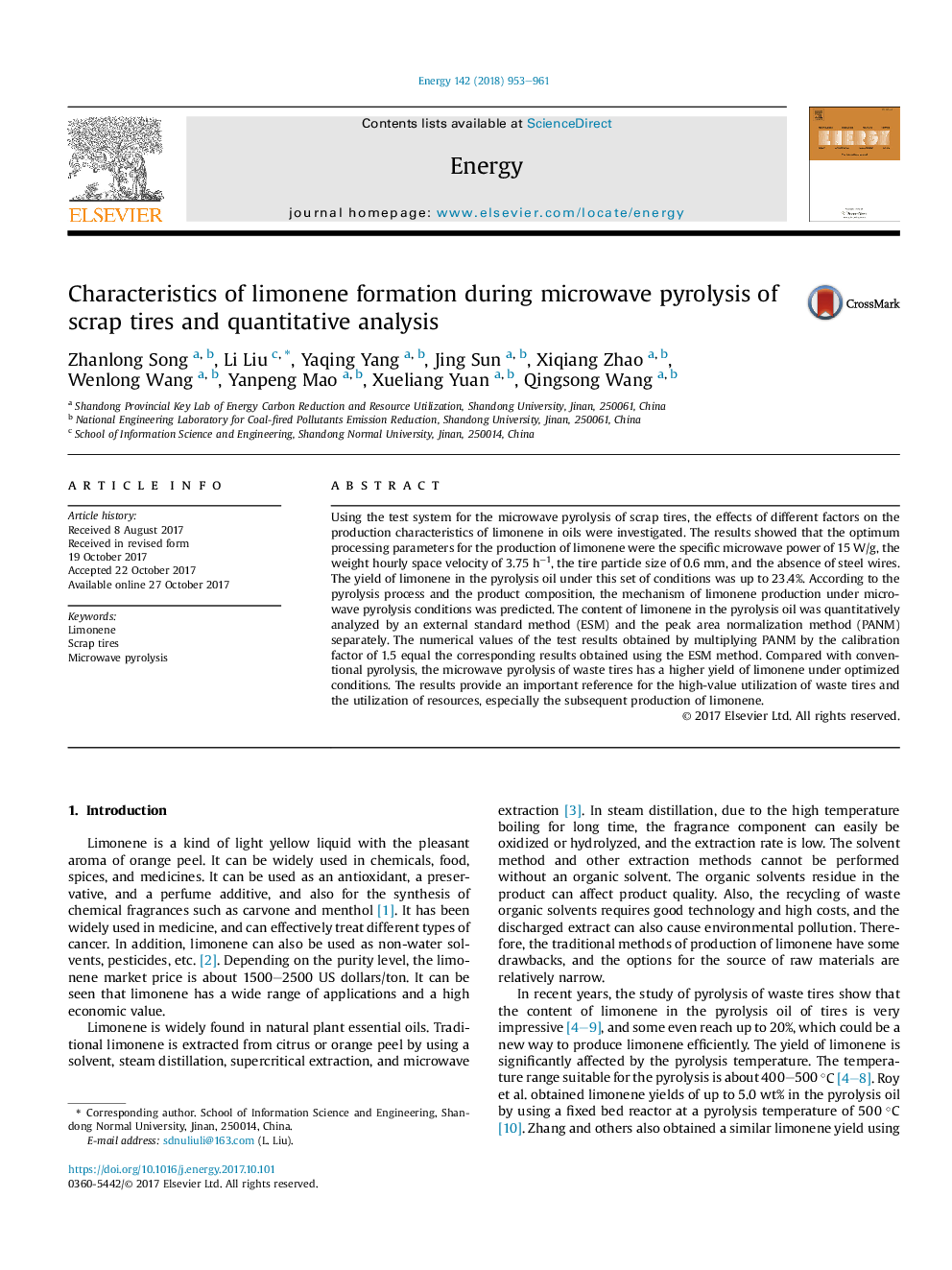| Article ID | Journal | Published Year | Pages | File Type |
|---|---|---|---|---|
| 8072571 | Energy | 2018 | 9 Pages |
Abstract
Using the test system for the microwave pyrolysis of scrap tires, the effects of different factors on the production characteristics of limonene in oils were investigated. The results showed that the optimum processing parameters for the production of limonene were the specific microwave power of 15Â W/g, the weight hourly space velocity of 3.75 hâ1, the tire particle size of 0.6Â mm, and the absence of steel wires. The yield of limonene in the pyrolysis oil under this set of conditions was up to 23.4%. According to the pyrolysis process and the product composition, the mechanism of limonene production under microwave pyrolysis conditions was predicted. The content of limonene in the pyrolysis oil was quantitatively analyzed by an external standard method (ESM) and the peak area normalization method (PANM) separately. The numerical values of the test results obtained by multiplying PANM by the calibration factor of 1.5 equal the corresponding results obtained using the ESM method. Compared with conventional pyrolysis, the microwave pyrolysis of waste tires has a higher yield of limonene under optimized conditions. The results provide an important reference for the high-value utilization of waste tires and the utilization of resources, especially the subsequent production of limonene.
Related Topics
Physical Sciences and Engineering
Energy
Energy (General)
Authors
Zhanlong Song, Li Liu, Yaqing Yang, Jing Sun, Xiqiang Zhao, Wenlong Wang, Yanpeng Mao, Xueliang Yuan, Qingsong Wang,
